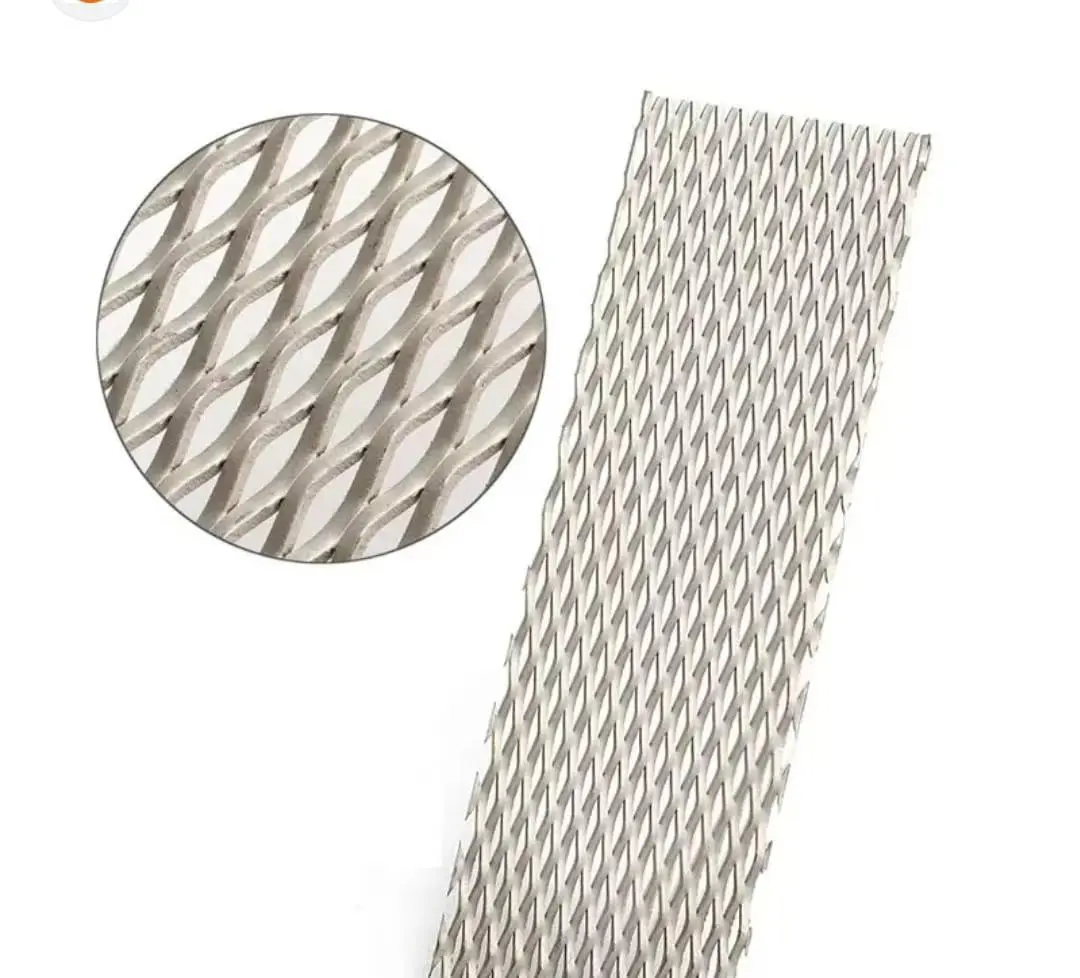The Role of Platinum-Coated Titanium Mesh Anodes in Industrial Electrolysis Systems
In the realm of industrial electrolysis, the choice of electrode materials plays a pivotal role in determining the efficiency, durability, and overall performance of electrochemical processes. Among the various options available, platinum-coated titanium mesh anodes have emerged as a game-changer, revolutionizing numerous applications across diverse industries. This article delves into the significance of these advanced electrodes, exploring their unique properties, applications, and the impact they have on modern industrial electrolysis systems.
The Synergy of Platinum and Titanium: A Powerful Combination

The platinum-coated titanium mesh anode represents a remarkable fusion of two exceptional materials, each bringing its own set of advantages to the table. Titanium, renowned for its exceptional strength-to-weight ratio and corrosion resistance, serves as the ideal substrate for these anodes. When coated with platinum, a noble metal celebrated for its catalytic properties and chemical stability, the result is an electrode that combines durability with unparalleled electrochemical performance.
The porous nature of the titanium mesh structure provides an expansive surface area, maximizing the exposure of the platinum coating to the electrolyte. This increased surface area translates to enhanced catalytic activity, facilitating more efficient electron transfer and accelerating electrochemical reactions. The synergistic relationship between platinum and titanium in these anodes yields a product that outperforms traditional solid electrodes in many applications.
One of the key advantages of platinum-coated titanium mesh anodes is their exceptional resistance to corrosion, even in highly aggressive environments. This property is particularly valuable in industrial settings where electrodes are exposed to harsh chemicals or extreme pH conditions. The platinum coating acts as a protective barrier, shielding the titanium substrate from degradation and extending the operational lifespan of the anode.
Applications and Advantages in Industrial Electrolysis
The versatility of platinum-coated titanium mesh anodes has led to their adoption across a wide spectrum of industrial electrolysis applications. In the field of water treatment, these anodes play a crucial role in electrochemical advanced oxidation processes (EAOPs) for the removal of persistent organic pollutants. The high oxygen evolution overpotential of platinum enables the generation of powerful oxidizing species, such as hydroxyl radicals, which can effectively degrade recalcitrant contaminants.
In the chlor-alkali industry, platinum-coated titanium mesh anodes have become indispensable for the production of chlorine and caustic soda. The dimensional stability and low overpotential for chlorine evolution make these anodes ideal for long-term operation in brine electrolysis cells. Their use has contributed to significant improvements in energy efficiency and product quality within this sector.
The metal finishing industry has also benefited greatly from the introduction of platinum-coated titanium mesh anodes. In electroplating processes, these anodes provide uniform current distribution, resulting in more consistent and high-quality metal deposits. Their resistance to passivation ensures stable performance over extended periods, reducing downtime and maintenance requirements.
Another notable application is in the field of cathodic protection, where platinum-coated titanium mesh anodes are used to prevent corrosion of metal structures in marine environments or underground pipelines. The durability and electrochemical stability of these anodes make them well-suited for long-term impressed current cathodic protection systems.
The advantages of platinum-coated titanium mesh anodes extend beyond their electrochemical properties. Their lightweight nature facilitates easier handling and installation compared to traditional solid anodes. Additionally, the open structure of the mesh allows for better electrolyte circulation, reducing gas entrapment and improving overall cell efficiency.
Innovations and Future Prospects
As technology continues to advance, researchers and manufacturers are exploring new ways to enhance the performance of platinum-coated titanium mesh anodes. One area of focus is the optimization of the platinum coating process to achieve better adhesion and uniformity. Techniques such as electrodeposition and thermal decomposition are being refined to create more durable and efficient coatings.
The development of nanostructured platinum coatings on titanium mesh substrates is another promising avenue of research. By manipulating the surface morphology at the nanoscale, scientists aim to further increase the active surface area and catalytic activity of these anodes. This could lead to even greater improvements in energy efficiency and reaction kinetics for various electrochemical processes.
In the pursuit of more sustainable and cost-effective solutions, efforts are being made to reduce the platinum content while maintaining or enhancing performance. This includes the exploration of platinum alloys or the use of alternative noble metals in combination with platinum. Such innovations could potentially broaden the applicability of these advanced anodes to a wider range of industries and applications.
The integration of platinum-coated titanium mesh anodes with other emerging technologies, such as advanced membrane systems or novel electrolyte formulations, holds promise for the development of next-generation electrochemical processes. These integrated systems could offer unprecedented levels of efficiency and selectivity in industrial electrolysis applications.
As environmental regulations become increasingly stringent, the role of platinum-coated titanium mesh anodes in green technologies is likely to expand. Their ability to facilitate efficient and clean electrochemical processes aligns well with global efforts to reduce industrial emissions and promote sustainable manufacturing practices.
Conclusion
The platinum-coated titanium mesh anode stands as a testament to the power of innovative materials engineering in advancing industrial electrolysis systems. By combining the strengths of platinum and titanium in a mesh configuration, these anodes offer a unique blend of durability, efficiency, and versatility that is transforming numerous industrial processes.
As research continues and new applications emerge, the importance of platinum-coated titanium mesh anodes in industrial electrolysis is only set to grow. Their ability to enhance process efficiency, reduce energy consumption, and improve product quality makes them an invaluable asset in the ongoing quest for more sustainable and effective industrial practices.
For those seeking to harness the benefits of advanced electrochemical technologies, including platinum-coated titanium mesh anodes and other cutting-edge electrode materials, Shaanxi Tianyi New Material Titanium Anode Technology Co., Ltd. offers expert guidance and customized solutions. To learn more about how these innovative anodes can revolutionize your industrial processes, please contact us at info@di-nol.com.
References
1. Johnson, M. E., & Smith, R. K. (2019). "Advances in Platinum-Coated Titanium Mesh Anodes for Industrial Electrolysis Applications." Journal of Electrochemical Engineering, 42(3), 215-229.
2. Chen, L., Zhang, Q., & Wang, Y. (2020). "Performance Evaluation of Platinum-Coated Titanium Mesh Anodes in Chlor-Alkali Production." Industrial & Engineering Chemistry Research, 59(11), 4876-4885.
3. Patel, S., & Ramirez, A. (2018). "Optimization of Platinum Coating Techniques for Titanium Mesh Anodes in Water Treatment Systems." Electrochimica Acta, 287, 124-133.
4. Liu, X., & Thompson, G. E. (2021). "Durability and Efficiency of Platinum-Coated Titanium Mesh Anodes in Aggressive Electrochemical Environments." Corrosion Science, 178, 109081.
5. Nakamura, H., & Anderson, K. L. (2017). "The Role of Platinum-Coated Titanium Mesh Anodes in Improving Energy Efficiency of Industrial Electrolysis Processes." Journal of Applied Electrochemistry, 47(8), 891-903.


